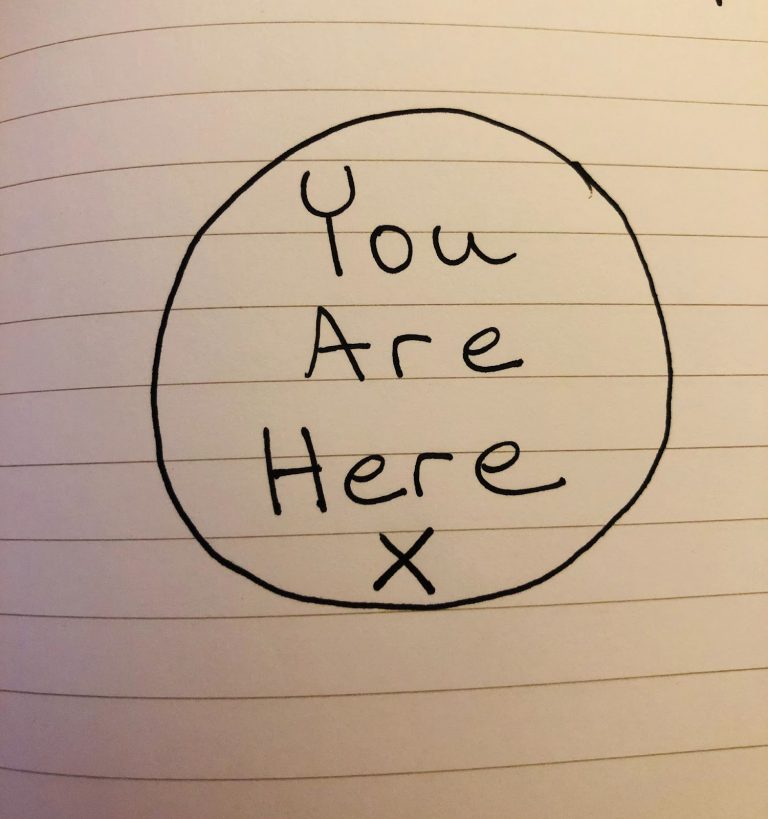By Karryn Olson
Often, after an in-depth permaculture learning experience, folks emerge with the desire to change their living or working situations so that they can make a bigger difference in the world.
I’ve identified some common mistakes that can be detours or even obstacles on this path towards a right livelihood, and I’m sharing them in the hopes you can avoid them and instead, fast-track regenerative solutions.
Mistake #1: Permavangelizing

People are attracted to permaculture for different reasons. Some even “fall in love” with it. Have you? Why?
Or why not?
Here are some of the reasons I was super excited about my PDC back in 1995:
- I found a framework that united a lot of what I was already thinking and feeling.
- I connected with other people who are passionate about Earth Care, People Care, and Fair Share.
- I felt hope… that we can use ecological design to heal our ecosystems and communities.
- I’d been searching for a way to ensure my life’s work would be regenerative… maybe this was it?!
- I thought it was a “certification” that would clarify my livelihood path.
When one “falls hard” for permaculture, some folks feel like we want to tell everyone about it, and get everyone to a PDC, or think “If they just knew permaculture, things would be better.”
I’ve heard this called “Permavangelizing” and here’s why I discourage it:
Permaculture isn’t the solution to all the world’s problems.
It’s many things (a mindset, a toolkit, a design discipline, a movement, etc.) and it offers many solutions, but there are other amazing frameworks and movements out there that are also great solutions. Those of us who have been in permaculture for a few decades have seen the permavangelist approach alienate people and communities.
Why? They needed jobs, but we offered groovy herb spirals. They needed safe playgrounds, but we preached about alternative currencies. Perhaps they became super excited about permaculture, but they felt it was out of their reach due to lack of land access. Or they left because nobody in permaculture locally looks like them, or because they recognize their indigenous practices as the foundation of permaculture but that’s not sufficiently acknowledged. For some, cost, travel, time off work, or family obligations made it impossible to access permaculture design courses.
Here’s what we can learn from this:
Instead of telling people what they need, listen!
AND
“Transcend permaculture” or even “Stop using the p-word”
(I say this only half jokingly!).
The word “permaculture,” for someone who has never heard of it, at best is confusing, at worst, they might ask “permaCULT?” (Yikes! Yeah, that really happened.)
The best ways I’ve seen folks talk about permaculture is to never even use the word. Instead, they listen deeply to the interests, skills, and concerns of the person(s) they are talking to, and enter with a posture of learning and dialogue. The listener then aims to support those people’s stated goals. If this is across lines of privilege, can we become what Dr. Bettina Love terms“co-conspirators”,who are willing to sacrifice something for the cause?
Deep listening is a key skill that supports relationships and your livelihood path.
Mistake #2: Being a forever generalist
Another reason we “fall in love” with permaculture is because it is highly integrative and interdisciplinary.
Did you feel your mind and heart was constricted by the artificial siloing of knowledge in school (science, math, language arts, physical education, etc)?
Were you totally disillusioned that school seemed to have very little to do with our real lives?
Have you felt liberated by permaculture because it is interdisciplinary, honors many ways of knowing, and is intended to be directly applied in our lifestyles?
This approach is refreshing because life IS interdisciplinary and integrative, so learning should be too! However, that liberating “it’s all connected” generalist approach is a real challenge for most livelihoods. Why?
First of all, permaculture demands one have a good understanding of a huge array of knowledge.As a joke, and in a fit of frustration, I spent five minutes brainstorming a list of all the things one should probably know at a basic level as a permaculturist. Here’s the long but incomplete list:

farming, gardening, biology, horticulture, animal husbandry, herbalism, geology, geography, hydrology, surveying, soil science, vermiculture, ecology, mycology, carpentry, plumbing, heavy machinery operation, agriculture, horticulture, food preservation, cooking, organizing, non-profit management, farm business planning, compost, aquaponics, forestry, systems thinking, beekeeping, invasive species, plant breeding, genetic diversity, bioregionalism, alternative economics, group facilitation, pedagogy, conflict management, governance, legal issues, climate disruption / mitigation / adaptation, mechanic skills, alternative energy, green building, recycling, waste management, public health, water management, movement building, seed sovereignty, globalization, fair trade, social justice, anti-oppression work, edible forest gardens, consulting, drafting, business skills, marketing, budgeting, human resource management, childcare, primitive skills, indigenous knowledge, mycology, keyline design, appropriate technology, organizational change, facilitation skills….
This is a growing list. Feel free to add to it.
The point is, nobody can learn it all. And thinking we need to leads to what I call expertise overwhelm. And women especially often feel they have to be pretty darn good at something before they will call themselves a professional at it. Double overwhelm. That can lead to paralysis about how to move forward in our livelihood.
To remedy this, many folks invest lots of time and money learning, taking tons of courses… beekeeping, keyline design, group facilitation, forest gardening…and they are fulfilling, but it’s hard when they don’t add up to a livelihood that puts food on the table. (Unless you are a farmer or homesteader who literally puts food on your table with your hard work and amazingly wide set of skills!)
Otherwise, the current economy tends to reward specialization. This makes sense, in that you hire a plumber to unclog your drain, you don’t pay them for being great at pruning fruit trees, software engineering, etc. because those skills aren’t relevant to the job.
So, what’s a permaculturalist to do?
The solution, as I see it, is to discern your “sweet spot,” shown below in a twist on the popular “ikigai” diagram.

Once you find that sweet spot, it becomes really clear which trainings you should invest in, so that you can be excellent at what you do, and get paid for it.
Mistake #3: Avoiding the “b-word”
What images, thoughts, etc. come up for you around the word “business”?
Back when I did this exercise, I realized that “business” felt like a bonafide swear word to me, I even called it “the real b-word.”
As a result, for most of my time teaching and organizing in permaculture, I didn’t know what a business model was, so I didn’t know if I had one, and I certainly didn’t know how to design one. I was hyper-allergic to business.
Then I started learning about the business case for sustainability, and saw that business owners who “got sustainable” were fast-tracking solutions. For example, I met builders of large-scale home developments, who were filling demand for greener subdivisions. Their work was causing whole supply chains to shift their manufacturing to greener processes over the span of just a few years.
Later, I researched the terms and found out that business and entrepreneurship are different things, and that entrepreneurship is a mindset that enables one to create new solutions that never existed before. What’s possible if we team that up with regenerative practices and mindsets?
I still have healthy concern about extractive capitalism and wrote a Manifesto that includes this:

I also know that we need to create lots of new, regenerative solutions.
Many folks are using a regenerative lens to reclaim agriculture from industry, to change our ways of being in relationship with nature each other, etc.
In short, there’s a lot of reclaiming happening.
So, if the skills of entrepreneurship will support our shift towards a regenerative economy, and if we can align business practices with our ethics, then let’s reclaim them.

Mistake #4: Putting the horse before the cart
As a permaculture designer, would you design a site without ever having seen it, or speaking in-depth with the stakeholders? No!
However, we do this type of thing all the time in developing our permaculture offerings. We come up with an idea that we “fall in love with” and we think everyone will also think is amazing, and we spend a whole bunch of time getting the curriculum or product “just right,” and then we take it to market. We didn’t do much market research. At best, we might have a vague idea of who our client is. So we put up flyers in the food co-op, post in likely Facebook groups, reach out to our like-minded communities. And then we don’t get enough enrollment, or we get enough enrollment but pretty soon all the likely suspects have taken our training and demand dries up.
Creating a product for which there is no market is a major reason why businesses fail.
What’s the solution?
Familiarize yourself with the tools of entrepreneurship to design your regenerative right livelihood.
In permaculture, we emphasize the ethical use of big machinery to make strategic interventions, where appropriate, to aid the landscape to regenerate itself over the long-term. Entepreneurship is just another set of tools that we can use with integrity, where appropriate, to design our livelihoods. The “backhoe analogy” in the video below often drives this home for permaculture enthusiasts.
This article was originally published in a module I created called “Design Your Regenerative Right Livelihood” that is part of a new model for the delivery of a full Permaculture Design Certificate course — co-created by women, for women, in all parts of the world, online.
Dive deeper into these and other livelihood-related topics in my courses and community exploring regenerative entrepreneurship at www.regenepreneurs.com.



